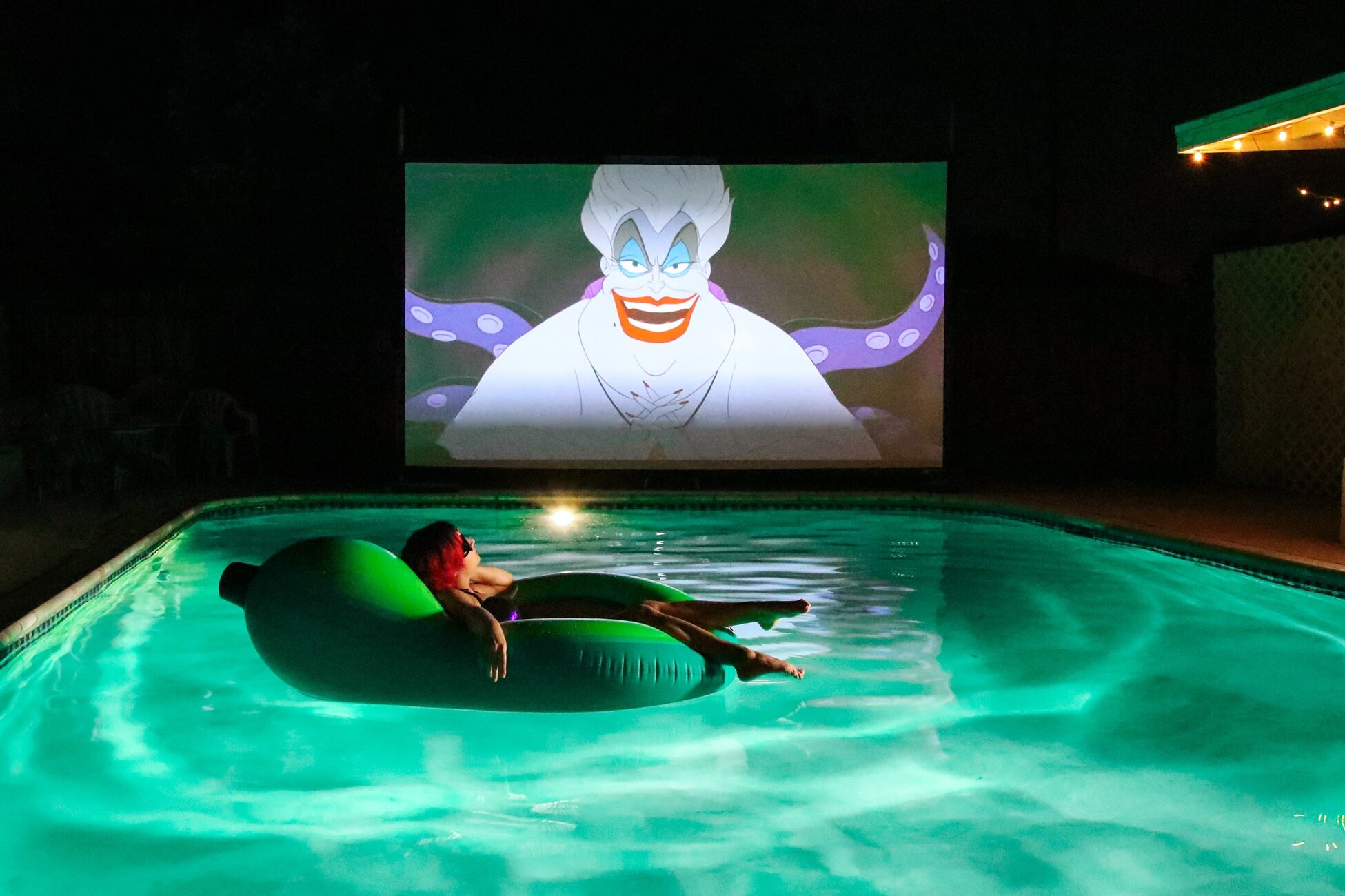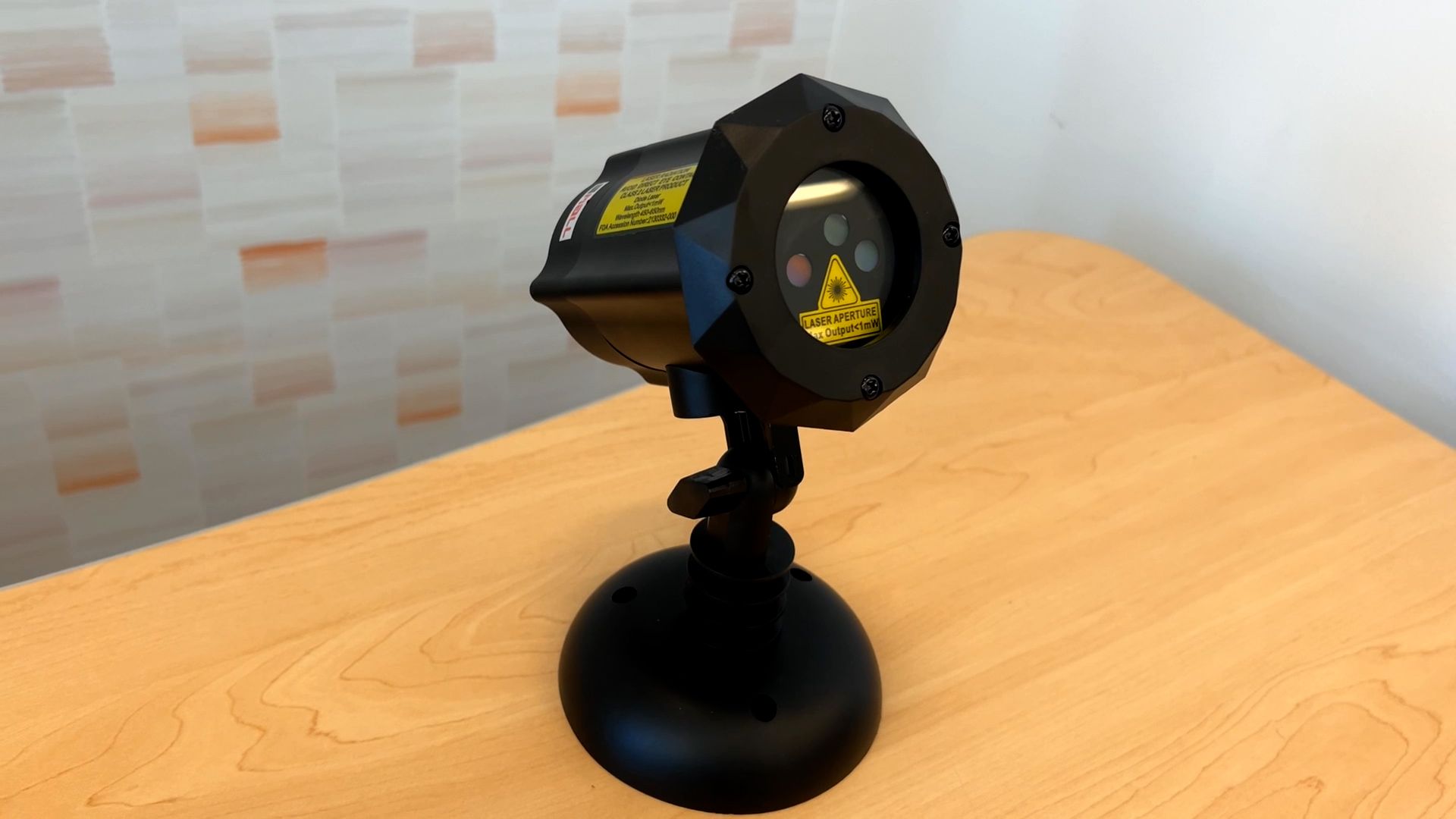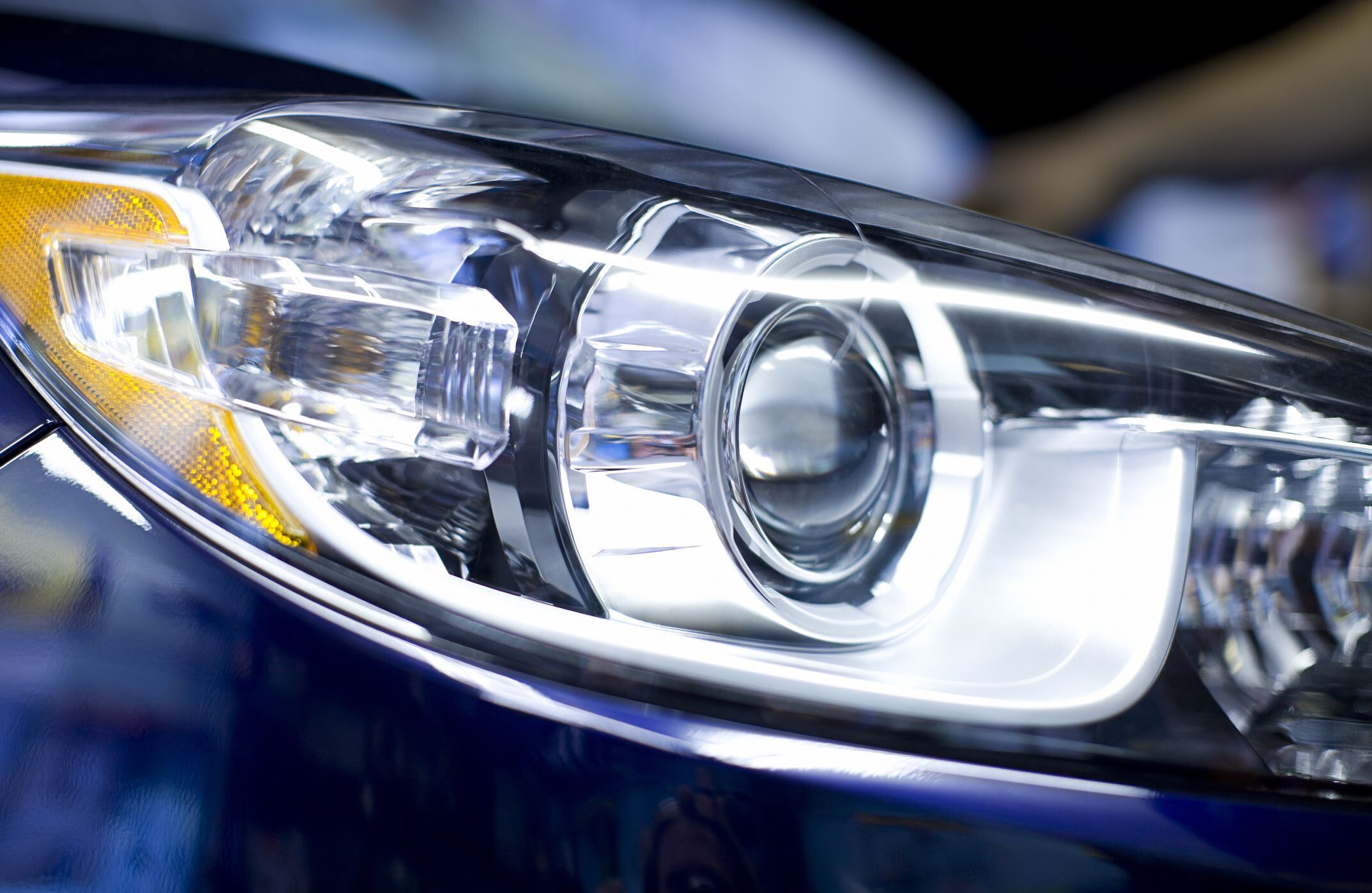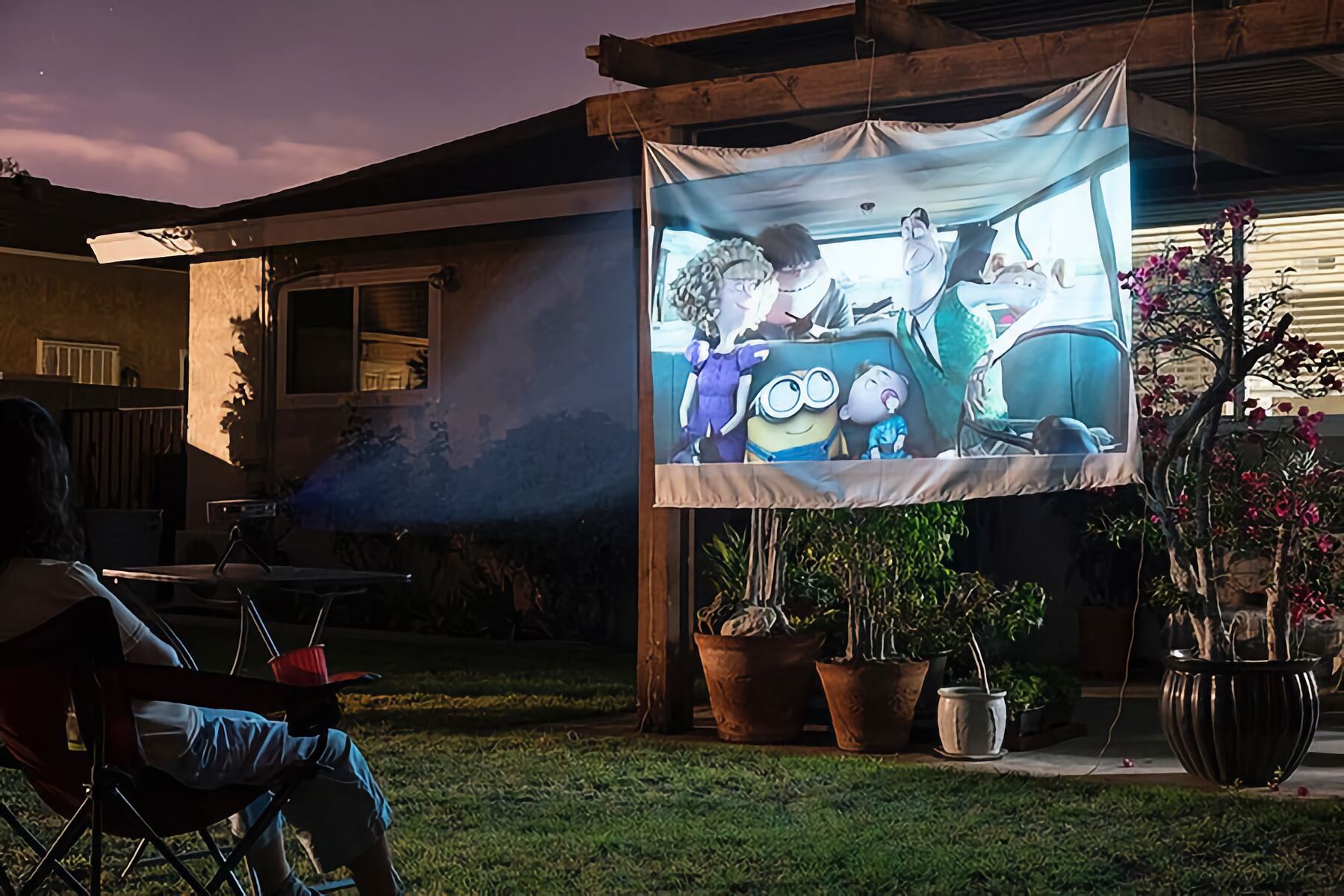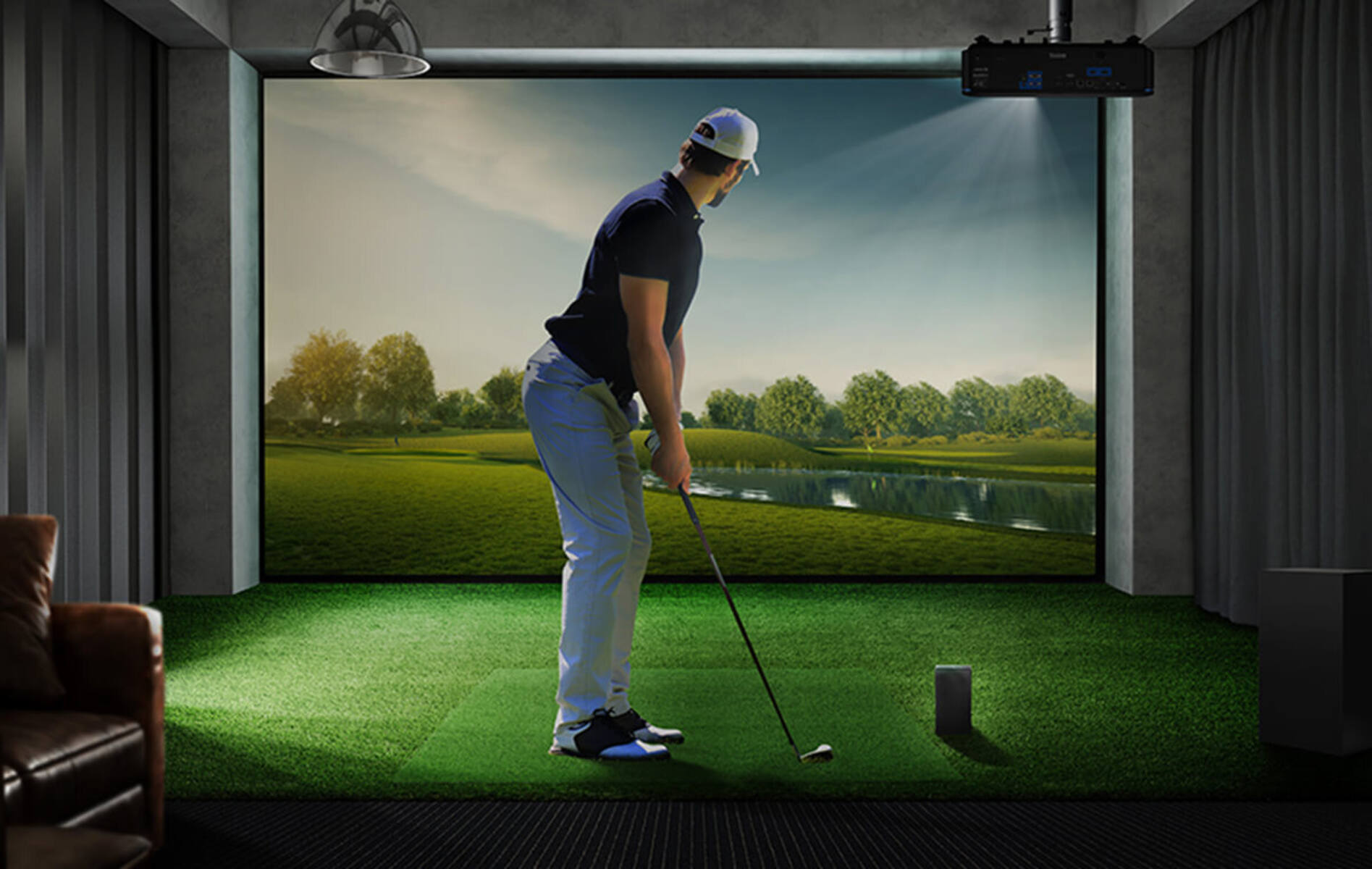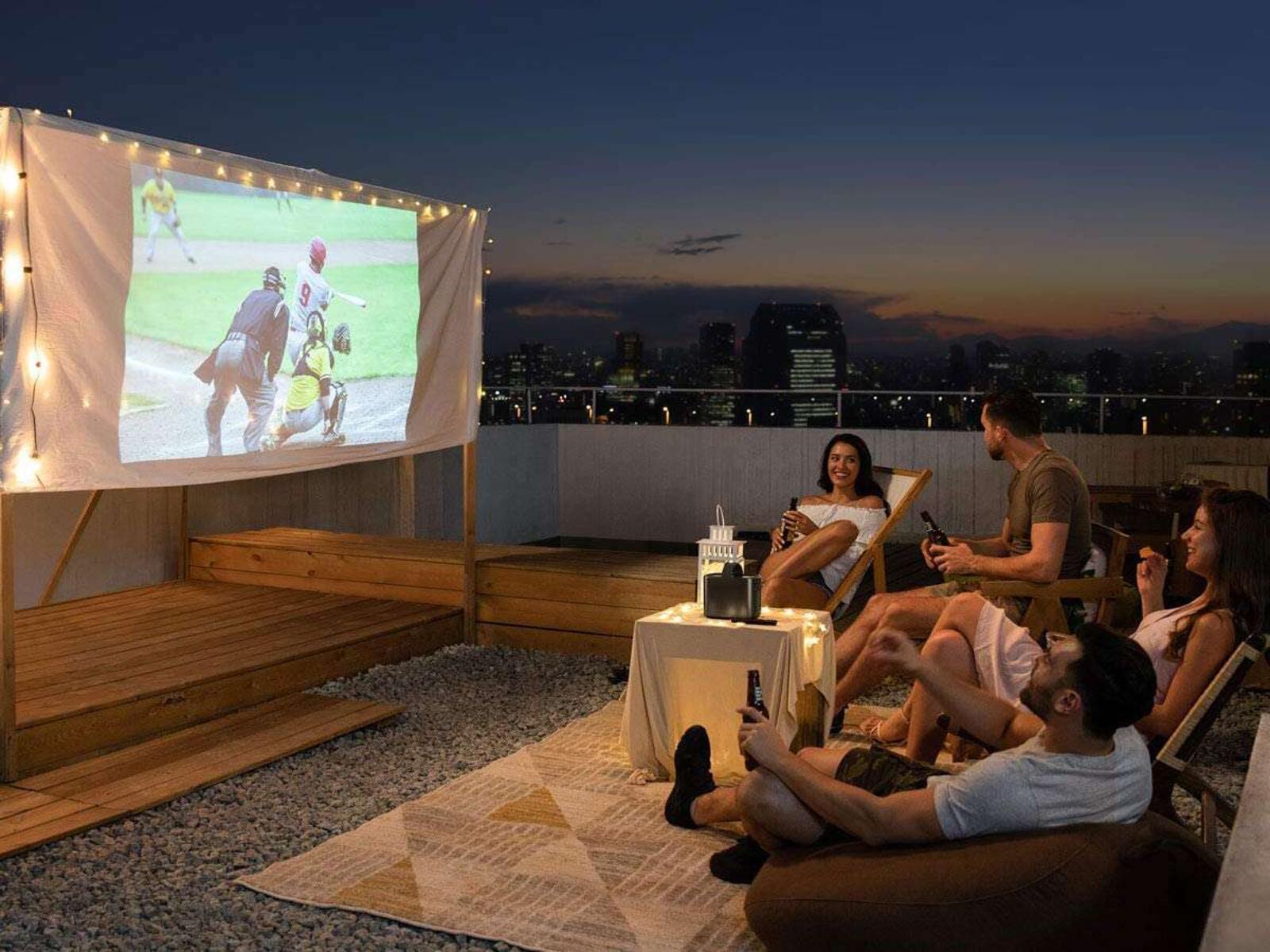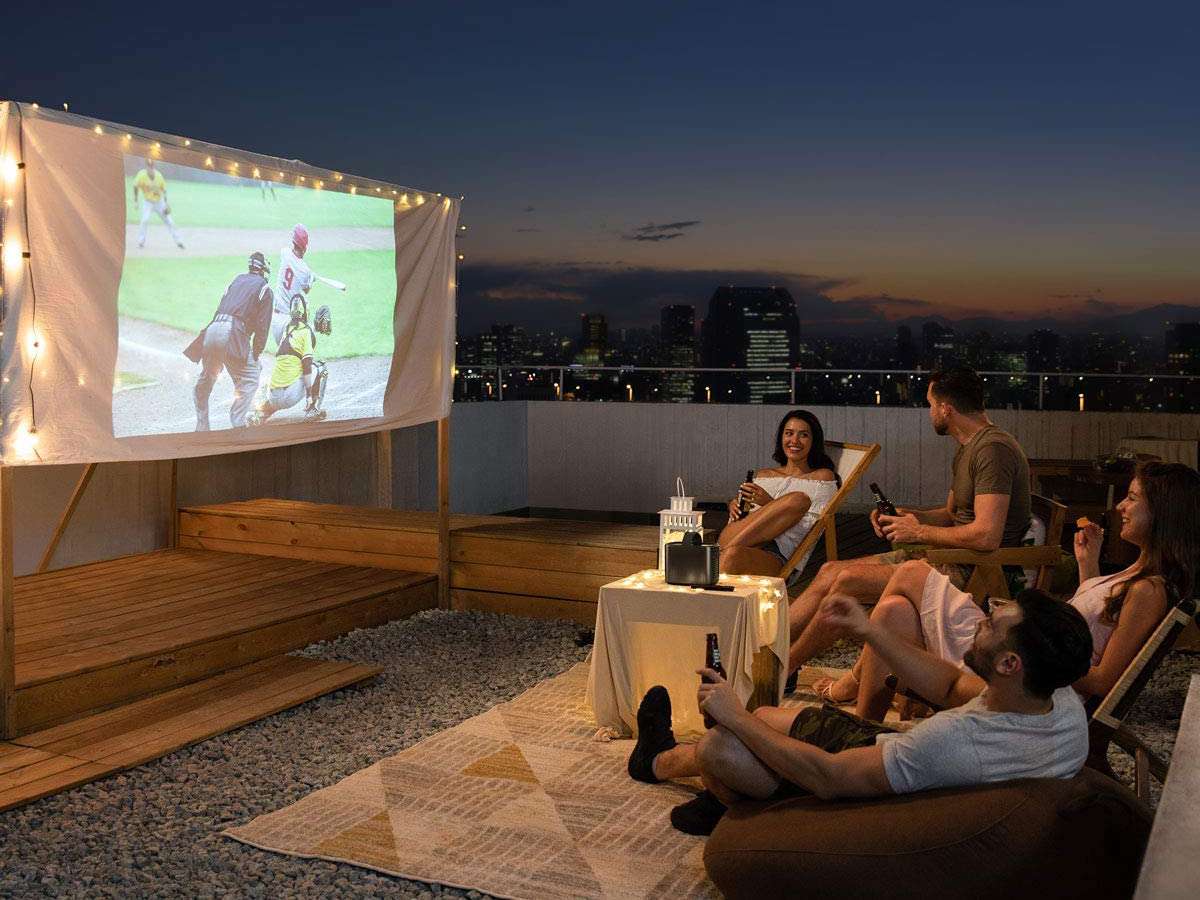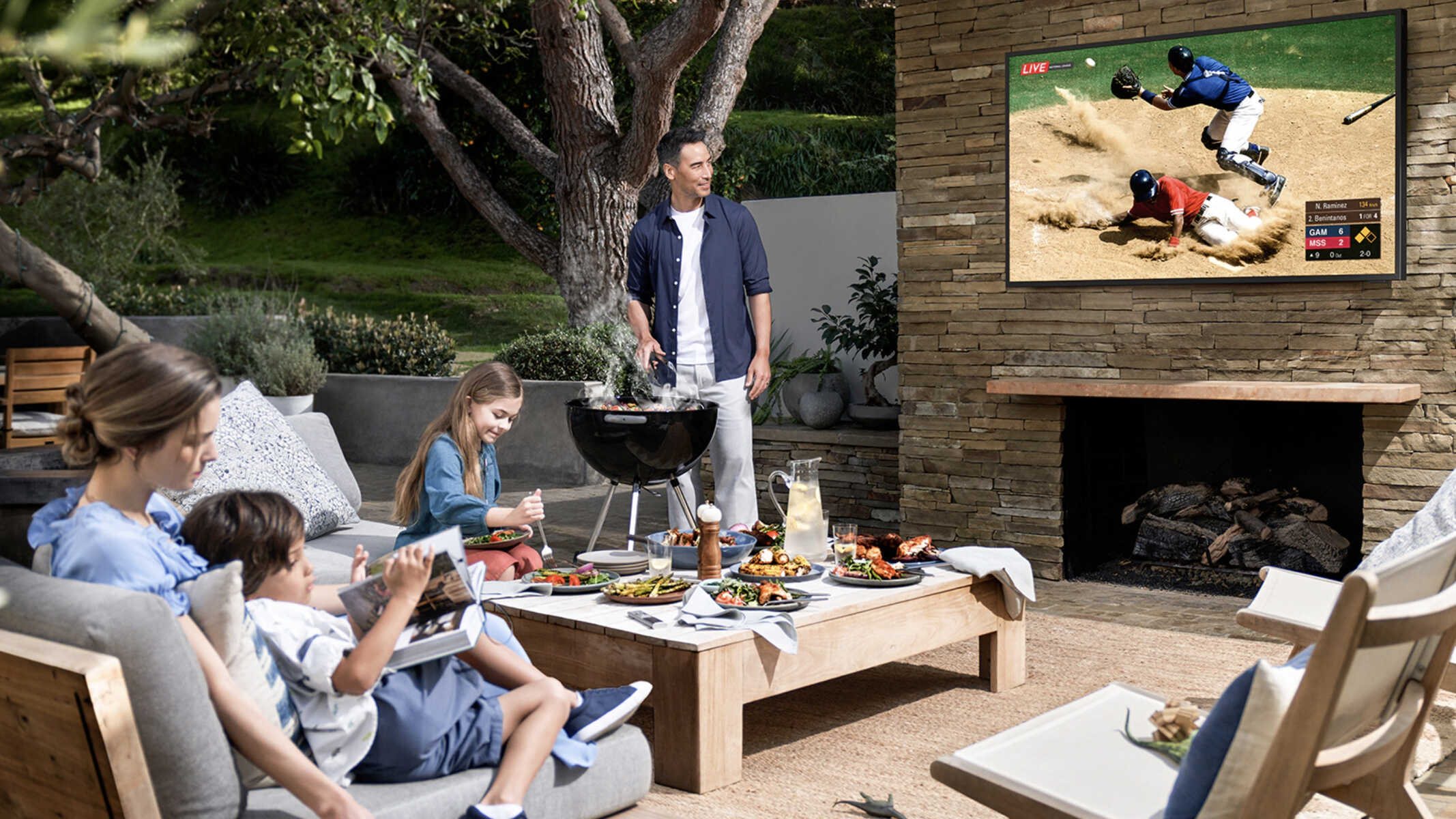Introduction
When it comes to enjoying movies, sports events, or presentations outdoors, projectors are an ideal choice. With the advancement in technology, projectors have become more versatile and can now be used in various environments, including the great outdoors. However, understanding how projectors work outside requires delving into the realm of projection technology and considering the challenges and considerations specific to outdoor projection.
In this article, we will explore the fascinating world of outdoor projection and discuss the key factors to consider when using a projector outside. From brightness and ambient light to screen selection and managing environmental factors, we will cover everything you need to know to ensure an optimal outdoor projection experience.
But first, let’s gain a better understanding of the fundamental principle behind projector technology. Projectors work by projecting an image onto a screen or surface using a light source and a combination of lenses and mirrors. The image is created by breaking down the source material into individual pixels and projecting them onto the screen, resulting in a large-scale display that can be viewed by an audience.
Outdoor projection, however, poses unique challenges compared to indoor projection. The outdoor environment introduces factors such as high ambient light, varying contrast ratios, and the need for a suitable projection surface. Additionally, managing environmental factors like weather conditions and outdoor audio solutions are crucial to ensure an enjoyable viewing experience.
Now that we have a general understanding of how projectors work and the challenges involved in outdoor projection, let’s dive deeper into each aspect to discover how to overcome these obstacles and enjoy a seamless and immersive outdoor projection experience.
Understanding Projection Technology
Before we delve into the intricacies of outdoor projection, it is essential to have a solid understanding of the technology behind projectors. By comprehending the basic principles, you can make more informed decisions when it comes to choosing a projector for your outdoor setup.
At the heart of a projector is a light source, which emits a beam of light that is projected onto a screen or surface. Traditionally, projectors used lamps as their light source, but nowadays, many projectors utilize advanced technologies such as Light Emitting Diodes (LEDs) or Laser sources. These modern light sources offer extended lifespan, improved energy efficiency, and higher color accuracy.
Once the light is emitted, it passes through a series of lenses and mirrors inside the projector to shape and direct the beam onto the screen. The lens system determines the throw ratio, which refers to the distance the projector needs to be placed from the screen to achieve the desired image size. Understanding the throw ratio is crucial in determining the optimal placement of your projector for outdoor projection.
In addition to the lens system, projectors also utilize digital imaging technology to create the image to be projected. The source material, whether it be a movie, presentation, or live stream, is converted into a digital format and divided into individual pixels. These pixels are then projected onto the screen sequentially, creating a cohesive image for the audience to view.
Another essential aspect of projection technology is the projector’s resolution. The resolution refers to the number of pixels that make up the image. Common resolutions for projectors include 1920×1080 pixels (Full HD), 3840×2160 pixels (4K Ultra HD), and 1280×720 pixels (HD). Higher resolution projectors provide sharper and more detailed images, translating to a better viewing experience.
Furthermore, projectors have different brightness capabilities measured in lumens. Brightness is a critical factor to consider, especially for outdoor projection, as it directly impacts the visibility of the image in high ambient light conditions. The brightness level required depends on the size of the projected image, the distance between the projector and the screen, and the environmental lighting conditions.
By understanding the fundamentals of projection technology, such as light sources, lens system, resolution, and brightness, you can confidently navigate through the plethora of projector options available in the market. With this knowledge in hand, we can now move forward to address the unique challenges that come with outdoor projection.
Outdoor Projection: Challenges and Considerations
Outdoor projection presents a distinct set of challenges and considerations that must be taken into account to achieve optimal results. Unlike indoor environments, the great outdoors introduces various factors that can significantly impact the quality and visibility of the projected image. Let’s explore some of these challenges and considerations:
- Brightness and Ambient Light: One of the primary concerns with outdoor projection is the presence of high ambient light. Unlike controlled indoor environments, outdoor settings often have abundant natural or artificial lighting, which can wash out the projected image. When selecting a projector for outdoor use, it’s crucial to consider its brightness capabilities. Look for projectors with higher lumens to combat the effects of ambient light, ensuring a brighter and more visible image.
- Contrast Ratio and Image Quality: Outdoor projection requires careful consideration of contrast ratio, as it directly affects image quality. Contrast ratio is the difference between the brightest and darkest areas of the image. A higher contrast ratio ensures a more defined and visually appealing image, especially in outdoor settings with varying levels of light. When choosing a projector, seek models with high contrast ratios to achieve optimal image quality during outdoor projection.
- Screen Selection: The choice of projection screen plays a crucial role in outdoor projection. There are various types of screens available, each with different reflective properties. Consider factors such as gain, which refers to the level of reflection the screen provides. Screens with higher gain help compensate for ambient light, enhancing the overall brightness and visibility of the image. Additionally, screen size and aspect ratio should be carefully chosen to match the desired viewing experience.
- Outdoor Projection Surfaces: In some cases, a dedicated projection screen may not be available or practical for outdoor projection. In such situations, alternative projection surfaces can be used, such as walls, buildings, or even inflatable screens. It’s important to ensure that the chosen surface has a suitable level of reflectivity to produce a clear and vibrant image. Experimenting with different surfaces and materials can help achieve the desired projection quality.
- Managing Environmental Factors: Outdoor projection is susceptible to various environmental factors that can affect the viewing experience. Weather conditions, such as wind, rain, or extreme temperatures, must be taken into account to protect the projector and maintain optimal performance. Additionally, managing the placement and positioning of the projector to minimize obstructions and unwanted shadows is essential for an immersive outdoor projection experience.
- Outdoor Audio Solutions: While image quality is prioritized in outdoor projection, audio plays a crucial role in creating a captivating viewing experience. Consider incorporating outdoor speakers or a sound system to complement the visual projection. Look for weather-resistant audio equipment to withstand the outdoor elements and provide clear, high-quality sound.
By understanding and addressing these challenges and considerations, you can ensure a successful outdoor projection experience. Now that we have explored these key factors, we can move forward with confidence in setting up and enjoying outdoor projection.
Brightness and Ambient Light
When it comes to outdoor projection, one of the central concerns is dealing with high ambient light. Unlike indoor environments, outdoor settings are often flooded with natural or artificial lighting, which can impact the visibility and quality of the projected image. To overcome this challenge and ensure a clear, vibrant image, it is imperative to consider the brightness capabilities of the projector.
The brightness of a projector is measured in lumens. The higher the number of lumens, the brighter the projected image. When selecting a projector for outdoor use, it is advisable to opt for models with higher lumens to compensate for the ambient light. The exact brightness requirements may vary depending on factors such as the size of the projected image, the distance between the projector and the screen, and the intensity of the ambient light.
For smaller outdoor setups or dimly lit areas, projectors with 2000 to 3000 lumens may suffice. However, for larger screens or environments with high ambient light, it is recommended to choose projectors with at least 4000 lumens or more. This ensures that the projected image remains visible and retains its color accuracy even in challenging lighting conditions.
In addition to considering the brightness of the projector, there are other strategies you can employ to combat the effects of ambient light. One option is to schedule outdoor projections during times when ambient light is naturally low, such as during dusk or nighttime. This reduces the competition of light sources and enhances the visibility of the projected image.
Another option to enhance the brightness is to utilize a high-gain projection screen. A projection screen with higher gain reflects more light back to the viewer, increasing the overall brightness and improving visibility. However, it is important to strike a balance, as screens with very high gain may result in a narrower viewing angle or uneven brightness distribution.
In situations where the ambient light cannot be completely controlled, such as outdoor events during the day, consider setting up shaded areas or using canopies to minimize the direct exposure of the projector to sunlight. This helps to reduce the impact of ambient light on the projected image.
By carefully considering the brightness capabilities of the projector, scheduling outdoor projections strategically, selecting appropriate screens, and managing the exposure to ambient light, you can create an optimal outdoor projection experience. Addressing the challenges posed by ambient light ensures that the projected image remains bright, visible, and enjoyable even under adverse lighting conditions.
Contrast Ratio and Image Quality
When it comes to outdoor projection, achieving optimal image quality is paramount to create an immersive viewing experience. One of the key factors influencing image quality is the contrast ratio of the projector. Contrast ratio refers to the difference between the brightest and darkest areas of the image, with higher contrast ratios resulting in more defined and visually appealing images.
In outdoor settings, where lighting conditions can vary, it is crucial to consider projectors with high contrast ratios. This ensures that the projected image maintains its clarity and detail, even in environments with significant ambient light. High contrast ratios enable the projector to portray deep blacks and vibrant colors, enhancing the overall image quality and contributing to a more engaging viewing experience.
When choosing a projector, it is recommended to look for models with a contrast ratio of at least 2000:1 or higher. This ratio indicates that the brightest areas of the image are 2000 times brighter than the darkest areas. Projectors with higher contrast ratios produce more pronounced details and a wider range of shades, resulting in images that appear more lifelike and dynamic.
Another consideration for image quality in outdoor projection is the resolution of the projector. Higher resolution projectors offer sharper and more detailed images, allowing viewers to enjoy a more immersive visual experience. Common resolutions for projectors include Full HD (1920×1080 pixels) and 4K Ultra HD (3840×2160 pixels). The choice of resolution depends on factors such as the intended screen size and the distance between the projector and the screen.
Additionally, it is important to keep in mind that image quality can be impacted by the choice of projection screen. The reflective properties and surface characteristics of the screen can significantly influence the perceived image quality. Opting for screens with excellent color reproduction and uniform light diffusion can enhance the overall visual experience. It is advisable to choose screens that complement the projector’s capabilities and provide optimal image representation.
Regular calibration and maintenance of the projector are also essential to ensure consistent image quality over time. Adjusting settings such as brightness, contrast, and color levels can optimize the image output for different environmental conditions and ensure accurate color reproduction.
By considering the contrast ratio, resolution, screen characteristics, and regular calibration, you can achieve exceptional image quality in outdoor projection. The combination of high contrast ratios, vibrant colors, and sharp details create a visually stunning display that captivates the audience and elevates their outdoor viewing experience.
Screen Selection
The choice of projection screen is a crucial consideration when it comes to outdoor projection. The screen plays a vital role in the overall image quality, visibility, and viewing experience. Different types of screens offer varying levels of reflectivity, gain, and uniformity. Let’s explore the key factors to consider when selecting a screen for outdoor projection.
Gain: Gain refers to the level of reflection a screen provides. A higher gain screen reflects more light back to the viewer, resulting in increased brightness and improved visibility, especially in environments with high ambient light. However, it is important to strike a balance, as screens with very high gain can have a narrower viewing angle and may create hotspots or uneven brightness distribution. Generally, screens with a gain between 1.0 to 1.3 are suitable for most outdoor projection scenarios.
Reflective Surface: The surface characteristics of the screen can significantly impact the overall image quality. Look for screens with excellent color reproduction and uniform light diffusion to ensure accurate representation of the projected image. Screens with a smooth texture and minimal texture grain help to maintain sharpness and clarity.
Size and Aspect Ratio: Consider the desired size and aspect ratio of the projected image when choosing a screen. Outdoor projection allows for larger screen sizes, but it is important to ensure the screen dimensions are suitable for the intended viewing area and maintain the correct aspect ratio. Oversized screens can lead to image distortion, while undersized screens may compromise visibility.
Portability: If you plan on using the screen for outdoor events or on-the-go setups, consider the portability of the screen. Look for screens that are lightweight, easy to assemble and disassemble, and come with a carry case or bag for convenient transportation.
Screen Material: There are various screen materials available, such as matte white, grey, or silver screens. Each material has its own reflective properties and gain levels. Matte white screens provide a neutral color representation and wide viewing angles, making them versatile for different outdoor projection scenarios. Grey screens are beneficial for increasing perceived contrast in high ambient light conditions. Silver screens offer higher gain and are suitable for applications when brightness needs to be maximized.
Ambient Light Rejection: For outdoor locations with uncontrollable ambient light, consider screens with ambient light rejection (ALR) properties. ALR screens have specialized coatings or filters that absorb or reject ambient light, resulting in improved contrast and image visibility even in bright outdoor environments.
When selecting a screen for outdoor projection, it is essential to strike a balance between gain, image quality, and screen size. Consider factors such as gain, reflective surface, portability, screen material, and ambient light rejection properties to make an informed decision that best suits your outdoor projection needs.
Outdoor Projection Surfaces
While dedicated projection screens are often the preferred choice for outdoor projection, there may be situations where using alternative projection surfaces becomes necessary or more practical. When selecting an outdoor projection surface, it is important to consider factors such as reflectivity, texture, and suitability for the specific environment. Let’s explore some options for outdoor projection surfaces:
Projection Screens: Traditional projection screens designed for outdoor use offer optimal reflectivity, uniform light diffusion, and optimal image representation. These screens are often made from specialized materials that provide high color accuracy, excellent contrast, and wide viewing angles. They are available in different sizes, aspect ratios, and gain levels to suit various outdoor projection setups.
Walls and Buildings: In some cases, using a wall or a building as a projection surface can be a practical solution. The key consideration here is the reflectivity of the surface. Smooth, light-colored walls or buildings tend to offer better reflectivity and image quality. However, it’s important to note that the texture of the surface can affect the sharpness and clarity of the projected image. Walls and buildings also require careful positioning and alignment to ensure that the image fits properly and is not distorted.
Inflatable Screens: Inflatable screens are a popular choice for outdoor events and gatherings. These screens are portable, easy to set up, and provide a convenient solution for temporary outdoor projection setups. Inflatable screens come in various sizes, and the material used for the screen should have good reflectivity and uniformity to ensure an optimal viewing experience.
DIY Solutions: For those looking for a cost-effective option, there are DIY projection surfaces that can be created using materials such as PVC fabric, stretched canvas, or blackout cloth. These surfaces can offer decent reflectivity and can be customized to fit specific size requirements. However, it is important to note that DIY solutions may not provide the same image quality and uniformity as dedicated projection screens.
Water Screens: Water screens are a unique and visually stunning option for outdoor projection, particularly for events near bodies of water. They involve projecting the image onto a curtain of water, creating a dynamic and immersive experience. Water screens use specialized equipment to create a thin, translucent screen of water, onto which the image is projected. However, it’s important to consider the environmental conditions and logistics when using water screens, as they require a stable water source and careful positioning to prevent dispersion or interference.
When selecting an outdoor projection surface, it is essential to consider the specific requirements of the setup, including the size of the projection, the available space, and the desired image quality. By choosing the appropriate projection surface, you can ensure optimal image representation, visibility, and an enjoyable outdoor projection experience.
Managing Environmental Factors
Outdoor projection is subject to various environmental factors that can impact the overall viewing experience. It is important to consider and manage these factors to ensure optimal performance and longevity of the projection system. Let’s explore the key environmental factors to consider when setting up outdoor projection:
Weather Conditions: Outdoor projection setups are exposed to the elements, such as rain, wind, and extreme temperatures. Ensure that your projector is adequately protected from these elements. If possible, choose a location that offers natural shelter, such as under a canopy or in a covered area. If the projector is not weather-resistant, use a protective cover or a weatherproof enclosure to shield it from rain or excessive moisture.
Projector Placement: Carefully consider the placement of the projector to minimize potential obstructions. Ensure that the projection path is free from trees, buildings, or any other objects that may cast unwanted shadows or interfere with the projected image. Keep the projector stable and secure to prevent any accidental movement or displacement during outdoor events.
Ventilation: Proper ventilation is essential for the optimal performance and longevity of the projector. Outdoor environments may have higher temperatures or heat buildup, especially during sunny days. Ensure that the projector has sufficient ventilation to dissipate heat effectively. Avoid placing the projector in direct sunlight, as excessive heat can impact its performance and potentially cause damage.
Power Supply: Ensure a reliable and sufficient power supply for the projector. Using extension cords and surge protectors can help facilitate the setup and protect the equipment from power surges. Consider the distance to the power source and use appropriate extension cords of suitable length to avoid voltage drop or power loss.
Noise Reduction: Some projectors emit fan noise to cool internal components. In outdoor settings, this noise may be more noticeable due to the absence of other ambient sounds. If possible, choose a projector with a low noise rating or opt for models with a quiet mode. Position the projector away from the viewing area to minimize any distractions caused by fan noise.
Cleaning and Maintenance: Outdoor environments may introduce dust, dirt, or other debris that can accumulate on the projector’s lenses or vents. Regularly clean the projector and perform routine maintenance to keep it in optimal condition. Follow the manufacturer’s guidelines for cleaning and maintenance to ensure proper functioning and longevity.
Audience Arrangement: Consider the arrangement of the audience and seating areas to ensure an optimal viewing experience. Provide comfortable seating and ensure visibility of the projected image from different angles. Consider the distance between the screen and the audience to avoid excessive eye strain or discomfort.
By carefully managing these environmental factors, you can enhance the performance and durability of your outdoor projection setup. Considering aspects such as weather protection, proper projector placement, ventilation, power supply, noise reduction, cleaning, maintenance, and audience arrangement will contribute to a seamless and enjoyable outdoor projection experience.
Outdoor Audio Solutions
While image quality is a crucial aspect of outdoor projection, audio plays an equally important role in creating an immersive and engaging viewing experience. To enhance the overall impact of your outdoor projection setup, it is essential to carefully consider the audio component. Let’s explore some outdoor audio solutions to complement your outdoor projection:
Outdoor Speakers: Investing in outdoor speakers specifically designed for outdoor environments can significantly enhance the audio experience. Outdoor speakers are typically weather-resistant and designed to withstand harsh weather conditions. They come in various sizes, shapes, and power ratings to suit different setups. Choose speakers with a wide frequency range, clear sound reproduction, and balanced audio output to ensure high-quality sound during outdoor projections.
Soundbars: Soundbars are a space-saving option that provides a compact and convenient audio solution. They typically come with built-in speakers and amplifiers to deliver enhanced audio performance. Soundbars can be placed near the projection screen or mounted on tripods to ensure optimal sound dispersion. Look for soundbars with integrated subwoofers to enhance the lower frequency response for a more immersive audio experience.
Wireless Audio Systems: Wireless audio systems offer flexibility and convenience in outdoor projection setups. These systems allow you to connect speakers wirelessly to the audio source, eliminating the need for long speaker cables. Wireless audio systems come in various configurations, including Bluetooth speakers or Wi-Fi-enabled multi-room audio systems. Ensure that the wireless speakers you choose have sufficient range and reliable connectivity for seamless audio playback.
Amplifiers and Receivers: Amplifiers and receivers can be used to boost the audio output and provide more control over the sound system. They allow you to connect multiple speakers, adjust sound settings, and fine-tune the audio to match your preferences. Consider amplifiers and receivers with features such as equalization controls, multiple audio inputs, and power ratings suitable for your outdoor audio setup.
Outdoor Subwoofers: To enhance the bass response and low-frequency impact of your outdoor audio system, consider adding outdoor subwoofers. Subwoofers are dedicated speakers designed to reproduce deep, thumping bass frequencies. They add depth and richness to the audio, especially for movies, music, and sporting events that benefit from powerful, immersive sound effects.
Audio Source: Make sure to select a suitable audio source for your outdoor projection setup. This can include devices such as multimedia players, portable music players, smartphones, or laptops. Additionally, consider using a media player or audio mixer that allows you to control and adjust the audio levels and equalization settings.
Audio Placement: Strategically position the speakers for optimal sound dispersion and coverage. Consider the size and layout of the outdoor space and take into account factors such as the distance between the speakers and the audience, any surrounding obstacles, and the desired audio coverage area. Experiment with speaker placement to achieve balanced sound distribution and ensure that all viewers can enjoy a consistent audio experience.
By incorporating outdoor speakers, soundbars, wireless audio systems, amplifiers, subwoofers, and choosing the right audio source and placement, you can create a captivating outdoor audio experience that enhances the overall impact of your outdoor projection setup. Remember, an optimal audio solution complements the visual display and immerses your audience in a complete and satisfying outdoor viewing experience.
Conclusion
Outdoor projection offers a unique and immersive way to enjoy movies, sports events, presentations, and more in the great outdoors. However, tackling the challenges and considerations specific to outdoor projection is crucial to ensure optimal results. By understanding projection technology, considering factors such as brightness and ambient light, contrast ratio and image quality, screen selection, outdoor projection surfaces, managing environmental factors, and incorporating suitable audio solutions, you can create a seamless and memorable outdoor projection experience.
When it comes to outdoor projection, considering the brightness capabilities of the projector is crucial to combat high ambient light. Opting for higher lumen projectors and selecting screens with appropriate gain can help maintain image visibility and clarity even in bright outdoor environments.
Additionally, paying attention to the contrast ratio and resolution of the projector ensures vibrant colors and sharp details, contributing to an engaging image quality. Choosing the right screen with optimal reflectivity, size, and aspect ratio further enhances the overall visual experience.
Managing environmental factors, such as weather conditions, projector placement, ventilation, power supply, noise reduction, and regular maintenance, ensures the longevity and optimal performance of the projection system.
Lastly, incorporating suitable outdoor audio solutions, including outdoor speakers, soundbars, wireless audio systems, amplifiers, subwoofers, and strategic audio placement, complements the visual projection and immerses the audience in a complete audio-visual experience.
By utilizing these considerations, you can create a captivating outdoor projection setup that allows you to enjoy your favorite content in a unique and memorable way. Whether it’s a backyard movie night or a large-scale outdoor event, a well-thought-out outdoor projection system will leave a lasting impression and create unforgettable moments with family, friends, or an audience.
Embrace the technology, adapt to the challenges, and immerse yourself in the world of outdoor projection for a truly remarkable viewing experience.







